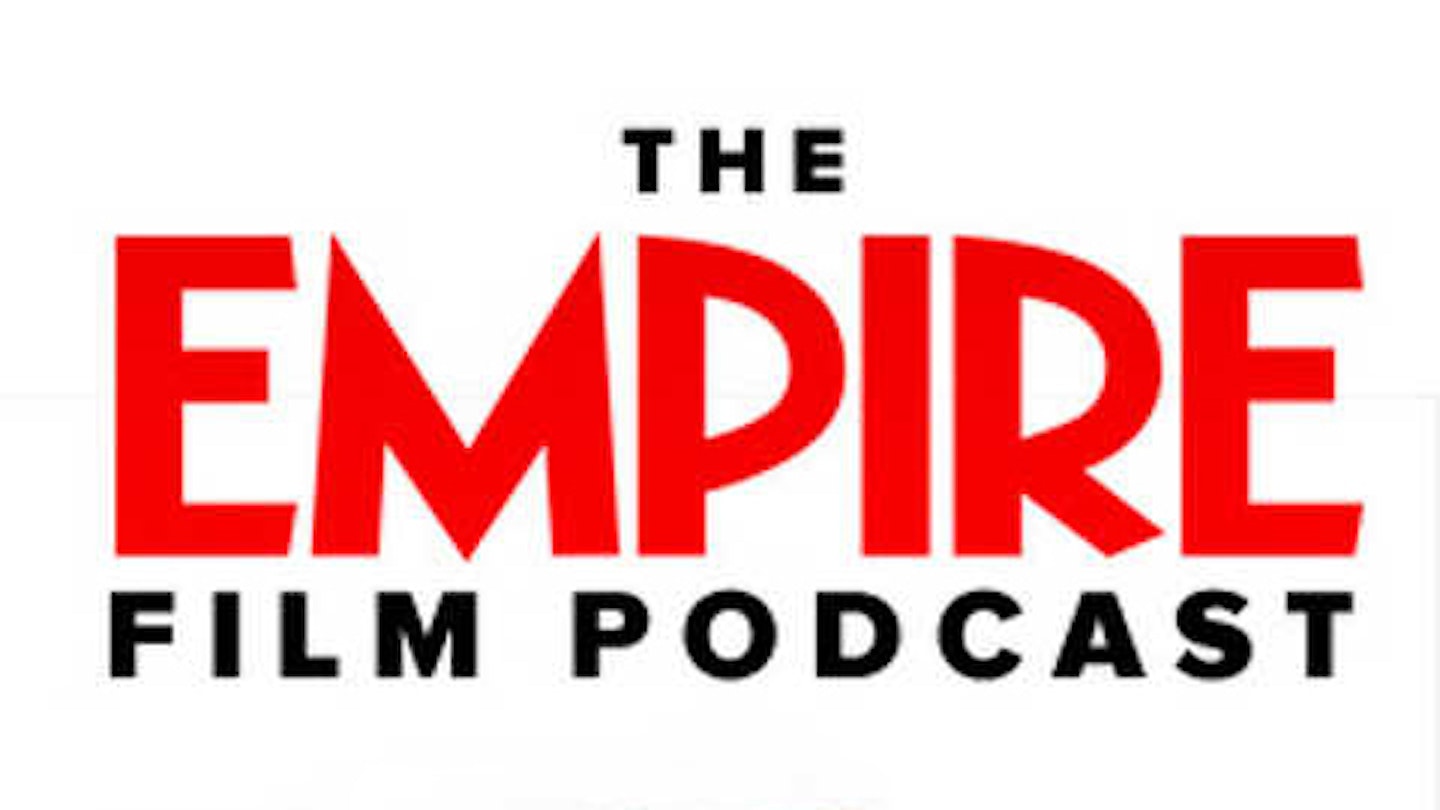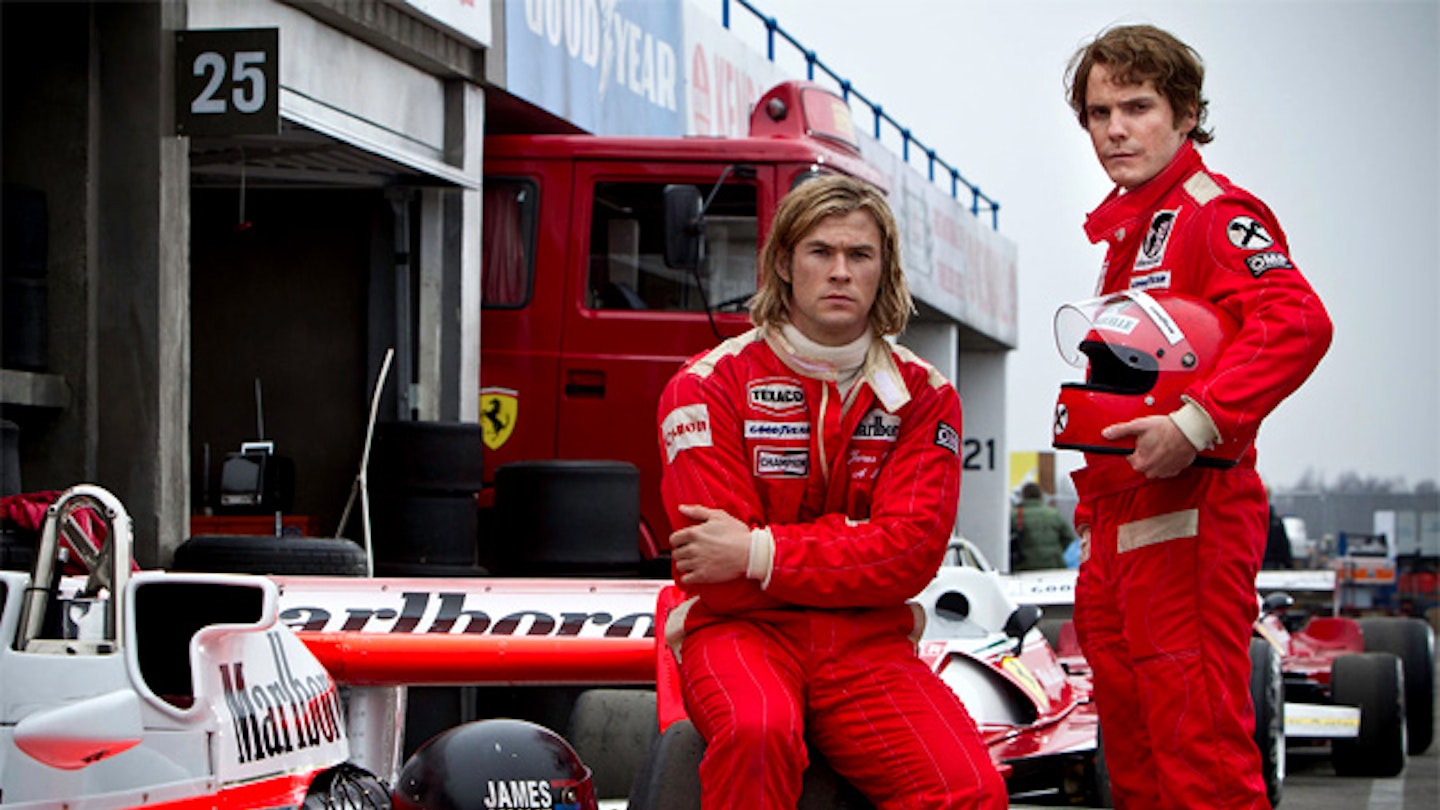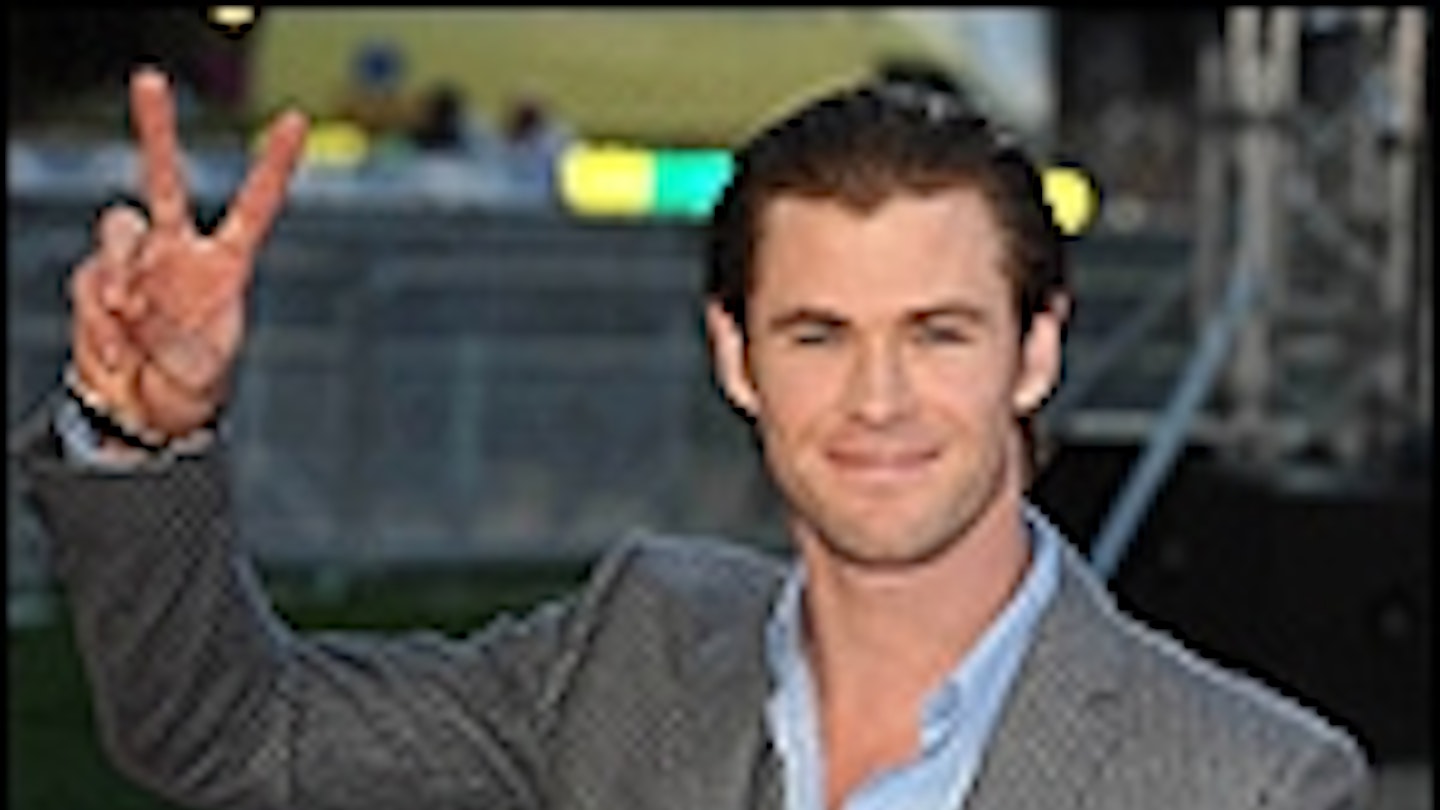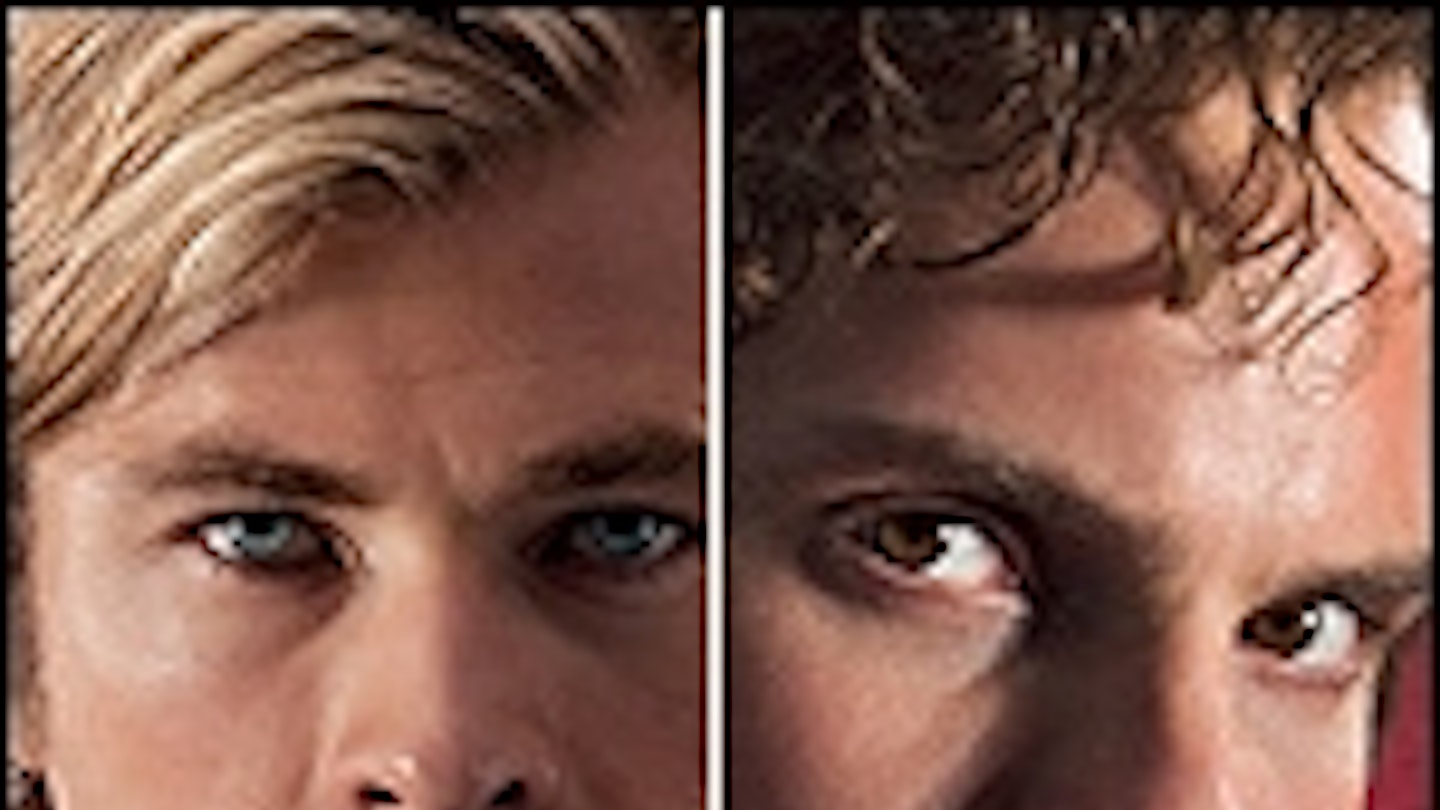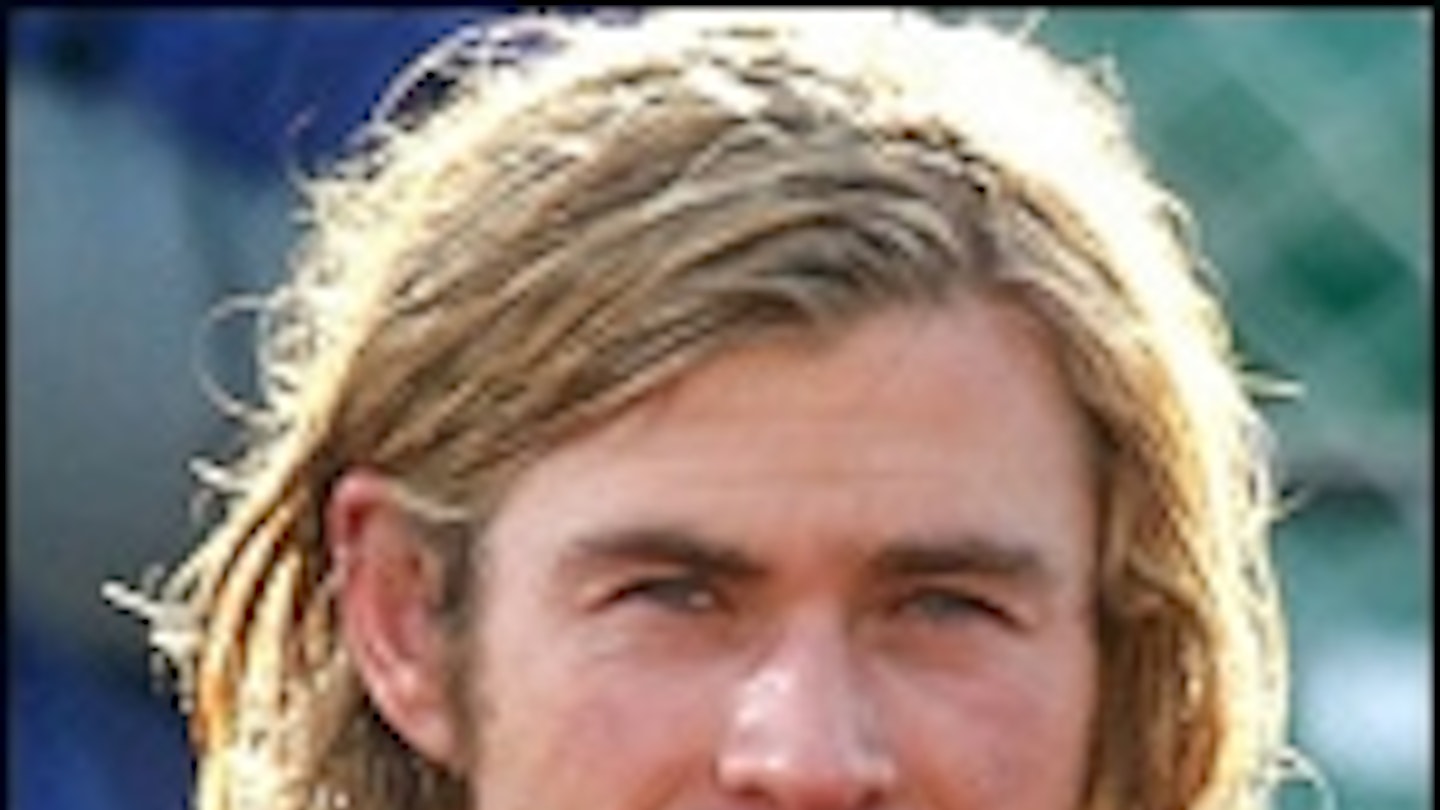At the start of Rush, Chris Hemsworth’s James Hunt observes (in voice-over) that Formula 1 is catnip to “rebels, lunatics and dreamers... the kind of people who want to make their mark on the world and are prepared to die making that mark.” What makes men — and Rush makes it clear this is a male desire — put their lives on the line in tobacco-sponsored coffins on wheels permeates the centre of Ron Howard’s entertaining biopic. Impeccably crafted, smartly scripted and built around two superb leading performances, Rush may lack subtleties but it delivers broad, riveting drama on and off the track — even for those who can’t tell slicks from wets.
Howard’s earlier work reverberates around Rush. His debut, Grand Theft Auto, is auto-erotica (so to speak) on a miniscule budget. The Paper displays a similar interest in the processes of a profession and Apollo 13 is a previous study of men under pressure in a small metal box. Perhaps the film in Howard’s back catalogue that Rush shares most DNA with is Frost/Nixon. Sharing screenwriter Peter Morgan, both films pitch a battle of nerve and smarts between two completely different figures set against the vibrant backdrop of the swinging ’70s (Rush is particularly good at evoking the era, without throwing flared jeans and bad hair at you). Yet while Richard Nixon and David Frost traded barbs on swivel chairs, Hunt and Lauda needled each other at 200 mph, defining not only their sport and a sporting era but also each other, creating one of history’s most compelling rivalries, a collision of opposite personalities and philosophies informed by a sky-high level of talent and determination.
Structurally, Rush follows standard sports biopic procedure: the first half maps out the lives of the two combatants mirroring and intersecting each other — butting heads in Formula 3, finding their drives in Formula 1, meeting the women in their lives — until the point they are locked in full-on combat; the second follows the crucial 1976 F1 season that saw the Hunt-Lauda rivalry boil down to the final race in a rain-swept Japan. The film neatly evinces the common ground that unites the men — both come from good stock; both rejected these privileged backgrounds to pursue their dreams; both had an engaging way with the press — but creates almost two distinct films in one to display their differences.
The James Hunt strand is a tiny epic of excess. We meet him staggering into a hospital, beaten up by a jealous husband, and within moments he is urgently shagging nurse Gemma on a desk. What follows is a tale of pleasure-seeking poshos playing at motor racing, until the money runs out and Hunt upgrades to McLaren and a supermodel wife (Olivia Wilde, boasting a pitch-perfect Brit accent). As played by Hemsworth, with more confidence, sex appeal and charm than all the 007s put together, Hunt is the hedonists’ hedonist, a so-called “immortal fuck” who sports a “Sex — The Breakfast Of Champions” patch, slooshes post-vomiting with champagne and plays Scalextrics under the influence of puff. Like Hunt himself, here the feel is loose, informal, occasionally woozy. The director of The Da Vinci Code has never been more indie.
Given Hemsworth’s engaging, comfortable-in-his-skin charisma, it would be easy for Rush to dip when it cuts to the more analytical, anti-social Lauda. Yet Howard has finely calibrated his machine. The Niki Lauda strand is an unpopular, “rat-faced” man-against-the-world story, a study in a different kind of confidence. Daniel Brühl’s Lauda is a coiled spring of pragmatism and unremitting bluntness, not afraid to dub the Ferrari a “shitbox” or dob Hunt’s non-regulation car into the officials. “Are you never not an arsehole?” his teammate Clay Regazzoni (an amiable Pierfrancesco Favino) asks him, and his entire actions, from refusing to celebrate his victories or delivering perhaps the least romantic marriage proposal in cinematic history, bear this out. “Happiness is the enemy,” he tells new wife Marlene (an effective Alexandra Maria Lara). “It weakens you.” It’s Brühl’s gradual revelation of Lauda’s vulnerability that gives the film its soul. You might go in rooting for Hunt, but you’ll come out moved by Lauda.
Rush can’t swerve the sports movie staples — montages, TV commentary to keep you up to speed — but finds fresh ways to energise the racing sequences. On the track, Howard goes full Raging Bull, using every cinematic trick in the book to heighten the sense of flying around a circuit at breakneck, breaklegs, break-every-bone-in-your-body speed. Working with Danny Boyle’s cinematographer Anthony Dod Mantle, the director leaves no stone unturned in finding places to put a camera: the vroom lens gets on gear knobs, under foot pedals, inside helmets and even follows the drill into the wheel during a pit stop. If the images don’t propel the action fast enough, Howard uses clever sound design and pounding music (from Gimme Some Lovin’ to Hans Zimmer’s U2-esque guitar stylings) to put you in the slipstream. The result is far more immersive than any 3D you can imagine, and makes The Fast And The Furious look like The Ambling And The Disgruntled.
Yet the full-throttle thrills are tempered by a sober subtext. The spectre of death hovers over Rush like Dod Mantle’s heavily filtered rain clouds. The portents build chillingly — a fan asks Lauda to date an autograph in case it’s his last race, an argument in a drivers’ meeting about safety could have easily been ripped straight out of Senna — until Lauda’s horrific crash at the Nürburgring, the camera diving headlong into the flames, the soundtrack heavy with melting sounds. Equally his subsequent convalescence is parlayed with unblinking grimness, the ’70s procedures used to hoover his lungs coming on like some Spanish Inquisition torture implement. Mark Coulier’s intricate burnt-skin prosthetics deserve special mention.
It’s by no means a perfect flick. Some of it feels overdone — Hunt beating up a Brit journalist for disparaging Lauda’s post-accident visage rings false — and a scene towards the end at a private airport works too hard to SPELL OUT THE THEME. Still, unlike many modern filmmakers, you always feel like you are in safe hands with Howard. As with Apollo 13, he keeps things satisfying to the end, even if you know the outcome of the final race. By the time we reach the obligatory closing real-life footage relayed in jazzy split screen, Rush will make you pine for a more character-filled, glamorous era of sport — the film captures the point where sponsorship and TV are about to go haywire — but more importantly, it has replaced interest in cars careering round a track with fascination in two extraordinary lives. Laurel wreaths and champagne sprays for everyone.

